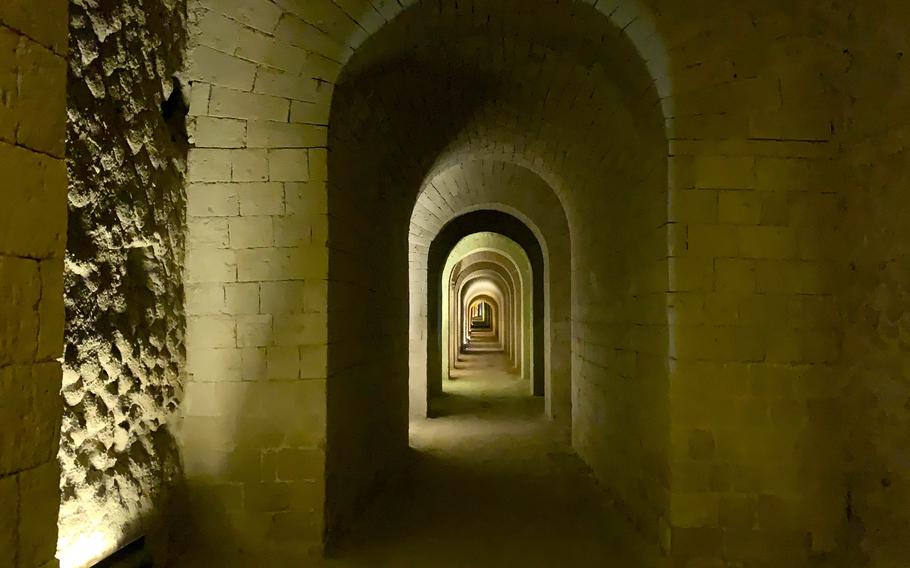
To see the Parco Archeologico del Pausilypon, visitors must traverse the Grotta di Seiano, a nearly 2,300-foot-long ancient Roman cave and tunnel built through the hill of Posillipo to connect Bagnoli with the Gaiola valley. During World War II, the tunnel was used by Bagnoli residents as an air raid shelter. (Alison Bath/Stars and Stripes)
Nestled on the promontory of Posillipo Hill overlooking the Bay of Naples is Villa Pausilypon, a testament to a real Roman holiday.
Much of the villa, near the ancient town of Baia, has been lost to the sea. But its amphitheater, Odeon or smaller theater, gardens and other structures still are visible.
Part of an archaeological park and nature preserve, Villa Pausilypon offers a glimpse of the hard-partying summer life of the Roman Empire’s elite.
It’s at Baia and other locations along Naples’ coastline that the general and statesman Julius Caesar; one of his assassins, Marcus Brutus; the infamous emperor Nero; and others would drink, eat, listen to music and pursue other pleasures in opulent villas with stunning views of Mount Vesuvius and the Tyrrhenian Sea.
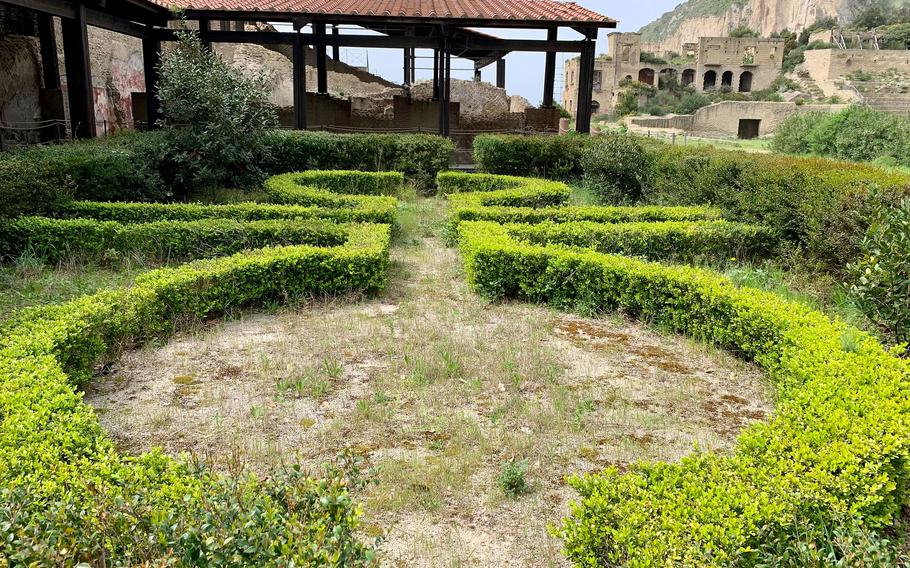
The villa at Parco Archeologico del Pausilypon had spa facilities, gardens, fountains, quarters for workers, port structures and a complex system of fish ponds. (Alison Bath/Stars and Stripes)
Built in the 1st century B.C., Villa Pausilypon was the summer home of Publius Vedius Pollio, a Roman equivalent of a knight and friend of the first Roman emperor Augustus. He dubbed the estate, thought to once comprise about 22 acres, Pausilypon, which means “respite from worry” in Greek.
Pollio was known for his lavish lifestyle and cruelty. He kept a pool of lampreys — jawless fish with toothed, funnel-like sucking mouths — to torture and kill servants who displeased him, according to lore.
Augustus, who reportedly put a stop to that practice, inherited the villa when Pollio died in 15 B.C. The property later became an official imperial estate.
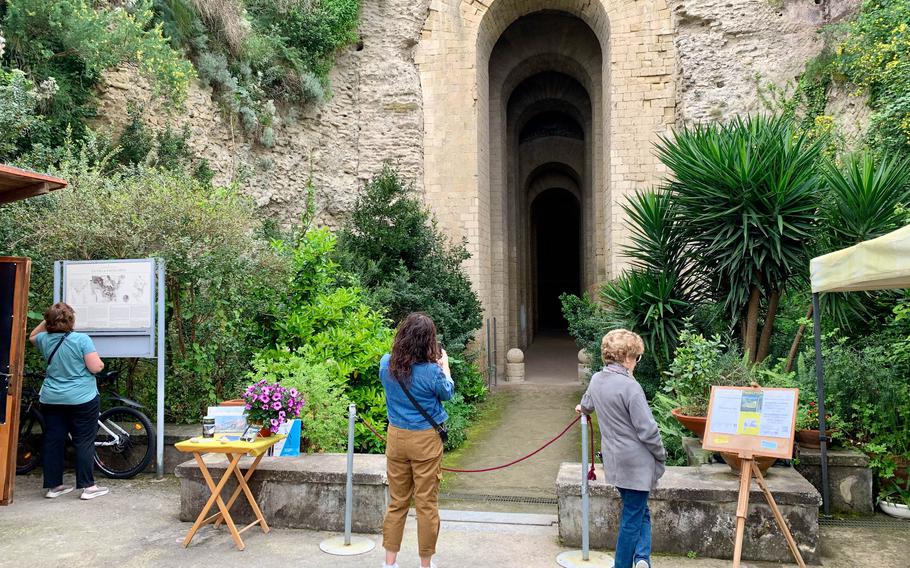
Visitors gather at the entrance to the Grotto di Seiano for guided tours of the Parco Archeologico del Pausilypon in Naples, Italy. Access to the park is only allowed with a guide. (Alison Bath/Stars and Stripes)
You can’t visit the villa and its archaeological site without a tour guide or accompanied visit. Guided tours are only available once a day Tuesday through Friday, and twice a day on weekends and holidays, according to the park’s website. The tours are in Italian, but visitors can call ahead to arrange for a guide who speaks English. Tickets are available online.
Accompanied visits are free but scheduled just once a day and do not include any interpretative talks about the site, according to the website.
To see the villa, visitors must first traverse Grotta di Seiano, a nearly 2,300-foot-long Roman tunnel that connects the town of Bagnoli and the large volcanic caldera known as Campi Flegrei to the Gaiola valley.
The tunnel was used to transport goods not only to the villa but also the village near it, our tour guide said.
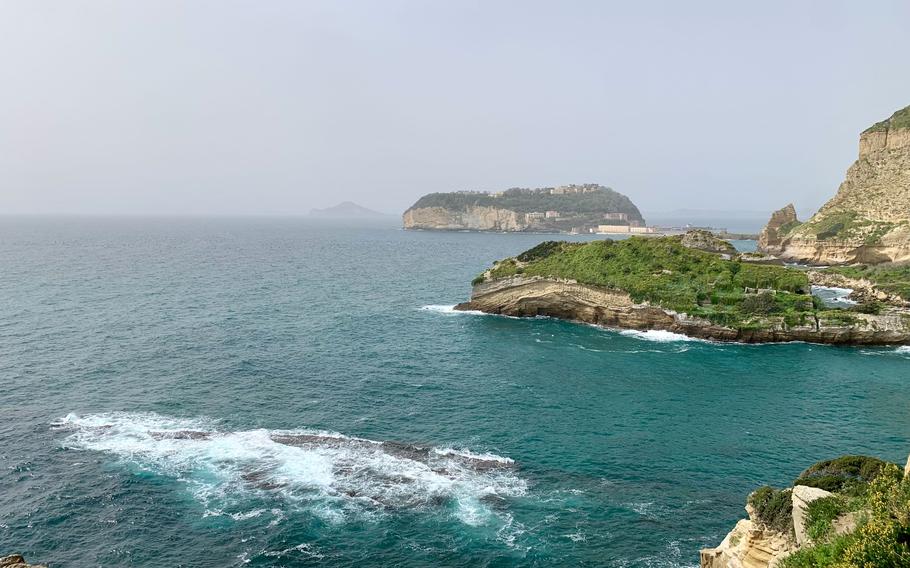
Visitors to Parco Archeologico del Pausilypon can take in views of the Tyrrhenian Sea, including a protected marine area. (Alison Bath/Stars and Stripes)
It has 120 arches, a single air hole that keeps it remarkably well-ventilated and another room dug out into the wall that once was likely used as a restroom. During World War II, the tunnel was used as an air-raid shelter for Bagnoli’s residents, according to our guide.
Its western end is marked by the remains of the headstone bearing an ancient Roman engraving from the grave of a freed man.
Once out of the tunnel it’s an easy, short walk on a meandering path lined with Mediterranean trees, shrubs, flowers and grasses to the villa. Toward the end, you’ll see the remains of the villa and its private theater straight ahead.

The grounds of the Parco Archeologico del Pausilypon feature a natural landscape with typical Mediterranean trees, shrubs, flowers and grasses. (Alison Bath/Stars and Stripes)
On the right is what was once a 2,000-seat public amphitheater built into the hillside. Visitors can’t walk on or sit in the amphitheater but can admire its architecture. Like much of the villa, it’s incorporated into the natural beauty of the landscape.
An adjacent building was not part of the original estate and likely was built later by a successive emperor, the guide said.
From there, the tour takes visitors to a terrace with views of the Gaiola marine preserve and the island of Nisida, where Brutus is thought to have had a villa and potentially hatched the plot to kill Caesar.
You also can see the Odeon where Augustus, sitting well apart from other theatergoers with an unobstructed view of the stage, probably listened to musical performances or heard poetry readings, the guide told us.
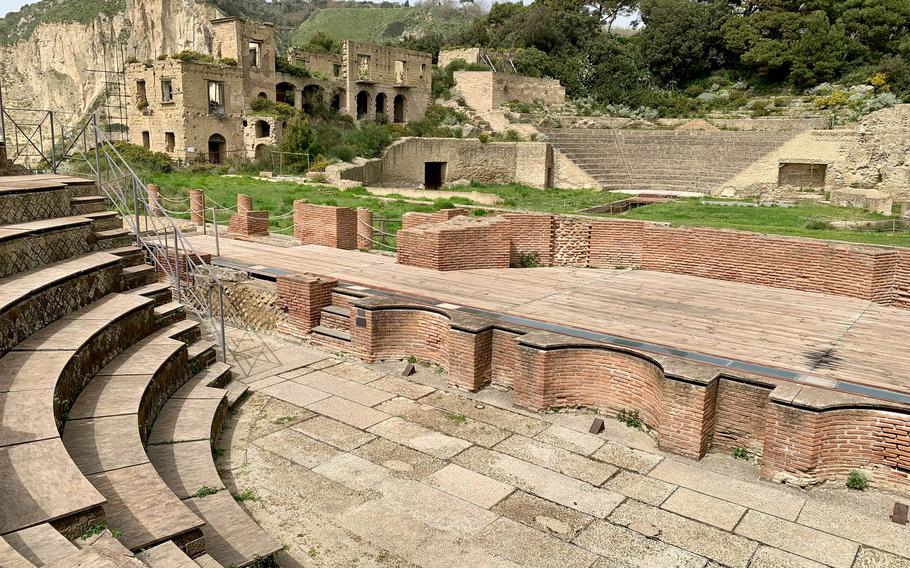
The Parco Archeologico del Pausilypon is home to an ancient villa built in the 1st century B.C. and owned by the first Roman emperor Augustus. Much of the villa is under the sea, but other structures are visible. (Alison Bath/Stars and Stripes)
The 90-minute tour also includes a short walk through a few rooms with ancient tilework and a fresco, and a view of a small garden laid out in a geometric pattern.
Much of the site, which also included a Nymphaeum or room with a fountain and plants, is off-limits to visitors. Excavation and studies of the villa are ongoing.
For example, a 2,000-year-old mosaic floor in the villa’s main living room was uncovered in 2022 by researchers from the University of Naples L’Orientale, The Charlotte Observer reported in 2022.
A visit to Villa Pausilypon offers a chance to explore some of Naples’ less well-known but equally important archaeological sites while enjoying the sun and sea views of Posillipo.
Parco Archeologico del Pausilypon
Discesa Coroglio, 36, Naples, Italy
How to get there: Public transportation is limited but there is bus service to the site. The park is an easy drive from most places in Naples, but there is only street parking nearby.
Cost: 7 euros for adults; 4 euros for children, ages 7-14; and children 6 and under free for guided tours. Accompanied entry (without a guided tour) is free.
Hours: Guided tours (1.5 hours): 11 a.m., Tuesday-Friday; 10:30 a.m. and 12:15 p.m., Saturday-Sunday and holidays. Accompanied entry (1 hour): 9:15 a.m., Tuesday-Sunday.
Information: +39 328-594-7790 or online: areamarinaprotettagaiola.it/pausilypon